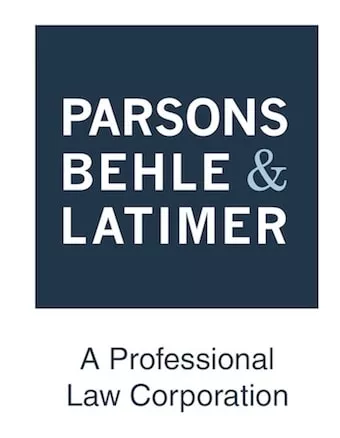- within Tax topic(s)
- with Finance and Tax Executives
- with readers working within the Advertising & Public Relations industries
There is a war happening in Utah, but rather than bullets, the combatants are using lawyers and freshly-baked cookies. The first shots were fired at the beginning of summer 2022 by Utah's staple gourmet cookie shop Crumbl Cookies. In May, Crumbl sued two of its competitors in the cookie industry Dirty Dough Cookies and Crave Cookies, principally alleging that Dirty Dough and Crave are infringing on Crumbl's trade dress and trademarks. These lawsuits gained substantial attention in local news outlets, including The Deseret News and The Salt Lake Tribune as well as on several social media sites who assigned the disputes the hashtag "#UtahCookieWars."
Crumbl pursued the fight throughout the blistering Utah summer, and though the lawsuits began as ordinary trademark actions, the Dirty Dough suit recently became more complex. Near the beginning of August, Crumbl asserted new claims against Dirty Dough for trade secret misappropriation. In support of its trade secret claims, Crumbl alleges that a former Crumbl employee gained access to Crumbl's confidential business information, possibly including "confidential cookie recipes," and that the former employee gave that confidential business information to Dirty Dough for its own use.
The lawsuit against Dirty Dough is still in its early stages, and it will likely be some time before Crumbl's claims are ruled on by a court or assessed by a jury. Nevertheless, Crumbl's allegations show the importance of protecting trade secrets from misappropriation by internal personnel, such as departing employees, or external sources, such as business competitors.
What is a trade secret?
The first step in protecting trade secrets is identifying what constitutes a trade secret. In most states, and under federal law, the definition of a trade secret is controlled by statutes. Most of these statutes define "trade secret" quite broadly. For example, the Utah Trade Secret Act defines "trade secret" to include "a formula, pattern, compilation, program, device, method, technique, or process." However, to gain protection under most trade secret statutes, information must meet two requirements. First, the information must derive economic value from being kept a secret and must not be readily ascertainable by other people who could benefit from its use. In many situations, this simply means the information must be valuable because it is not publicly available. Second, an employer must use reasonable efforts to keep the information a secret.
Oftentimes, information that businesses classify as "confidential" rises to the level of a trade secret. Some common examples of confidential information that may constitute trade secrets include customer lists, manufacturing processes, proprietary formulas or recipes, financial information and business analyses.
How can businesses protect their trade secrets?
There are some practical steps businesses can take to make sure their confidential information is protected under trade secret law. First, businesses should constantly evaluate what steps they are taking to maintain the secrecy of their trade secrets. As noted above, if a business fails to use reasonable efforts to maintain the secrecy of its information, the information is not protected as a trade secret. Determining what efforts are sufficient to maintain trade secret protection is not an exact science, but some measures that businesses commonly use to maintain the secrecy of their confidential information include restricting access to information on a "need-to-know" basis and using user-authentication software to restrict access to information. Moreover, businesses ought to include thorough policies in their employee handbooks and trainings that cover permissible uses of confidential information. Businesses should also ensure that copies of confidential information are recovered from departing employees so that the information is not purposefully or inadvertently disseminated to any third parties.
Additionally, restrictive covenants are powerful tools that businesses can use to protect their trade secrets and confidential information. Restrictive covenants are contract provisions that are often included in employment agreements and other contracts memorializing business relationships. Many businesses use non-disclosure provisions in their contracts to prevent the dissemination of their confidential information outside of the intended recipients. Non-competition and non-solicitation provisions may also help prevent the dissemination of trade secrets and confidential information.
Finally, businesses should consider hiring legal professionals to conduct a trade secret audit. During these audits, lawyers will meet with key custodians of confidential business information to both identify likely trade secrets and give advice on how to gain and maintain trade secret protection for confidential information.
What should businesses do if they suspect their trade secrets have been stolen?
If a business suspects that its trade secrets have been stolen, it should contact a legal professional as quickly as possible to create a response plan. A response plan often includes conducting a digital forensic analysis to determine what information has been taken and seeking emergency injunctive relief through the court system to recover, and immediately prevent dissemination of, the business's trade secrets and confidential information.
Originally published by Utah Business.
The content of this article is intended to provide a general guide to the subject matter. Specialist advice should be sought about your specific circumstances.


